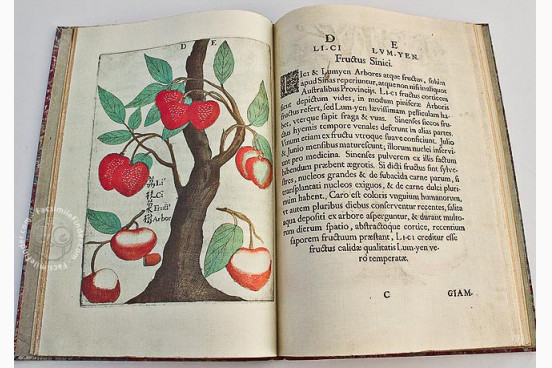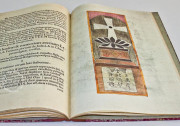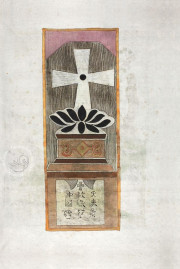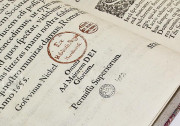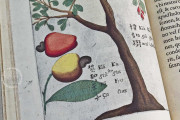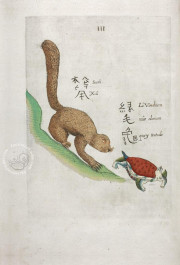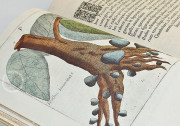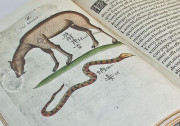Michał Piotr Boym (born in 1612 or 1614 in Lviv, died Aug. 22, 1659 in Guangxi) was a polish orientalist, a Jesuit missionary in China, scientist, cartographer, one of the first European sinologists, promoter of Chinese medicine in Europe and envoy of the Emperor Yongli of the Southern Ming Dynasty to the Pope.
The Author and His Journeys
In 1631, Boym joined the Jesuit convent in Cracow. He spent 10 years in different convents in Poland, not only Cracow, but also in Sandomierz, Kalisz and Yaroslav, preparing himself for the missionary work in the Far East.
After being ordained a priest in 1643, Boym went to China via Rome and Lisbon, and stayed in Macau, where he was a teacher at the Jesuit College. Then he worked as a missionary on Hainan Island, being the first European to describe the island in details.
When Hainan got occupied by the Manchus (in 1647), he went to minister in Tonkin. In 1649 he was sent to the court of the Emperor Yongli and after nearly three years he returned to Europe as envoy, whose mission was to present the situation of the Southern Ming Christian court to the Pope in Rome and to procure external support for it.
After long and numerous efforts and adventures, after obtaining such a support of the Pope Alexander VII (in 1655), Boym returned to China. But while he arrived to Goa in India, the situation of Yongli was already dramatic. On August 22, 1659, Michal Boym, unyielding defender of a lost cause, exhausted with tough years of wandering died in the Chinese province of Guangxi. He was buried in an unknown place.
Observations made during the journeys served as the basis for Boym’s vivid writing activity. He left numerous works concerning various field.
The Great Work
The most known work of Michal Boym is "Flora Sinensis" (Flora of China).
Published in 1656 in Vienna Flora Sinensis was the first in Europe systematic description of the Far East Flora. The earlier partial, sometimes completely fictional information about that world of flora could only be found in ancient works, starting from Herodot, and the next countries and great expeditions to the East systematically enlarged the knowledge. In XVII often in the travel dairies of missionaries and tradesman exotic plants and animals were mentioned, but always they were only observations made by non-professionals off their geographic, ethnology and trade observations.
The First Systematic Characterization of Plants of the Far East
Michal Boym as the first European tried to systemize the plants of the Far East, creating it the issue of his work. His composition gave the XVIIc. Europe a systematic, wide knowledge about fauna and flora of the Far East which were presented from two perspectives: unusual character of the plants and their usefulness (almost every description contains information on the economic or medical values). Boym does not present the full picture (the size of Flora is not big enough, the work contains 71 pages), but present certain items of the Far East flora and fauna – the most interesting ones. Flora Sinensis depicts the whole picture of an exotic world of fauna and flora and it literary speaking depicts. The text is accompanied with woodcut pictures, which in our exemplar were hand painted by using water paints.
The Interest of the European Scientific Community
At the moment of the publishing "Flora Sinensis" reached a wide interest in the scientific milieu of Europe, and was quickly translated into French and was partly published in monographs devoted to China and in compilations dealing with the Far East. It was then the prime information source for all eager to gain knowledge about still yet mysterious China. The XXc. changed the perspective and in the studies of the contemporaries "Flora Sinensis" became one of the items to learn about the history of nature sciences in Europe. The researchers present its modernity in contrast with the knowledge of the time on the nature of the Far East, the correctness of the given data, author’s competence. Although Boym’s work was always studied as a botanic writing it should be considered as a interdisciplinary piece of work. Researching it requires joining the competence of different scientific fields, as on its pages research fields from classical philology, sinology, history of the missions and botanic join.
The Widening of the Horizons
Boym’s work not only confirms the membership of XVIIc. Polish literature to the circles of European Latinitas, but also widens its interest range. Thus proves that the scientific and research impulse from the central and east Europe enriched the common European heritage.
Michal Boym was the first person to use the word “flora” in the title of a book on the plants of the particular area. Boym’s original work […] is published in folio in Vienna, Austria, by the Mateo Ricci publisher, has 75 leaves and 23 figures. […] Boym describes 22 plants, of which more than a half is rather native to the Indian archipelago. 21 plants are illustrated by engravings, made correctly enough and accompanied by Chinese characters. That is followed by a description of several Chinese mammals, birds, reptiles, etc. and illustrated by two figures.
We have 1 facsimile edition of the manuscript "Flora Sinensis": Flora Sinensis facsimile edition, published by Orbis Pictus, 2012
Request Info / Price
